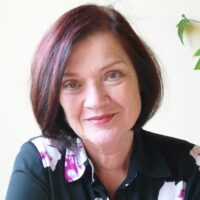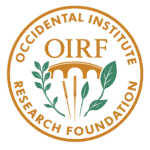Integrative Cancer Therapy for Breast Cancer
Improving Quality of Life and Survival Time for Patients
With around 74,500 new cases annually, breast cancer is by far the most common cancer in women, according to the Center for Cancer Registry Data of the Robert Koch Institute. According to that, one in eight women will develop breast cancer in the course of her life, and one in six affected women is not yet 50 years old.
Nothing is known about the actual cause of the disease, but risk factors are considered
- Overweight (obesity)
- Lack of exercise
- Type 2 diabetes mellitus
- Unhealthy diet (especially high-fat diet)
- Consumption of harmful stimulants (especially alcohol and nicotine)
- Long-term replacement of female sex hormones after the age of 50 (hormone replacement therapy)
- Dense breast tissue or a high mammography density: The tissue of the breast contains less fatty tissue and more glandular and connective tissue.
- Several cases of breast and ovarian cancer in the family also indicate genetic risk factors.
From findings to therapy
If skin changes on the breast are discovered or a lump is felt, the disease is already advanced. Therefore, in addition to the annual clinical examination, a mammogram every two years is recommended for early detection. However, mammography in particular is discussed controversially. Some believe that the pressure exerted on the tumor during mammography can cause ruptures and injuries, potentially favoring metastasis. Others, on the other hand, fear radiation exposure and its carcinogenic effect. Thermography is considered an alternative. This is another imaging procedure that can visualize the infrared radiation emitted by the tumor and its higher blood flow with the help of a thermal camera.
If the findings are suspicious during the preliminary examinations, a biopsy or sample excision is carried out as standard. Once the diagnosis has been made, the tumor is surgically removed and the breast is then treated with radiation therapy. In contrast to the past, the entire breast is no longer always amputated and the lymph nodes of the armpit are no longer automatically removed. In modern tumor therapy, only the so-called sentinel lymph node is removed. This is the lowest lymph node that reaches just up to the glandular body. If it is already affected by cancer, it must be treated differently than if it were not affected. The S3 Guideline [of Germany] largely regulates the therapeutic procedure here.
Chemotherapy and radiation are therapy options that sometimes bring significant side effects, such as:
- Lowering white blood cells
- Damage to the bone marrow
- Damage to the immune system
- Damage to the nervous system
- Damage to liver and kidney functions
In postmenopausal women, chemotherapy is now often dispensed with, especially if the tumor is hormone receptor-positive. These women are treated for five to ten years with substances that block the female hormone estrogen. These hormone blockers can be combined with target substances that block enzymes in the cells. These substances also have side effects, but are generally better tolerated than chemotherapy.
Nevertheless, these therapies offered by conventional medicine are not as successful as would be desirable. A high percentage of patients experience a recurrence. This means that the cancer comes back, either where the disease started and was operated on, or it affects other organs such as the liver, bones, lungs and brain.
Complementary Cancer Therapy Options
Complementary therapeutic measures beyond the S3 Guidelines can significantly improve cancer treatment and thus its effectiveness. Complementary medicine recognizes surgery as a potentially curative and thus healing method. On the other hand, chemotherapy and radiation therapy weaken the body and the immune system, increase the burden of toxins and, above all, cannot kill the cancer stem cells that are the cause of the recurrence of the disease years after the initial therapy.
Studies have shown that chemotherapy can increase survival time by ten years. For example, in the group of patients treated with chemotherapy, 47 percent of patients still survived after ten years. In the group without chemotherapy, however, 40 percent were still alive. This results in an advantage for chemotherapy of seven percent. In order to achieve this advantage, however, 100 percent, thus all patients, must accept the side effects and the negative long-term effects of chemotherapy.
Complementary therapies can also be very effective. This is generally understood to be therapies that have few side effects and
- Strengthen the healthy parts of the organism,
- Eliminate deficiency states
- Identify and eliminate inflammation foci,
- Regulate the function of the immune and endocrine systems, and
- Restore homeostasis (= balance).
Patients are in a weakened state after radiation and chemotherapy and are therefore more inclined to recurrences and metastases. This situation can be significantly improved if toxins are eliminated from the body, the immune system is improved and the hormone status is modulated. The healthier the tumor patients become after the primary therapy, the more difficult it becomes for the tumor to recur.
Integrative measures include a change in diet, physical activation, the reduction of psychological stress and anxiety as well as the elimination of infection focuses that lead to chronic subliminal inflammation. Effective therapies such as hyperthermia are also classified as alternative therapies.
Integrative Cancer Therapy in Practice
The German Society of Oncology (DGO) is a medical society that, according to its own declarations utilizes pluralistic cancer medicine and above all promotes naturopathy and complementary medicine.
One of the clinics that adheres to their guidelines is specialized oncological Klink St. Georg in Bad Aibling, Germany. There, various therapies are integrated into classic cancer medicine in order to slow down or even stop the tumor growth of patients – and to do so with maximum quality of life.
The clinic uses local or systemic hyperthermia, galvanotherapy (current therapy) and photodynamic therapy (light therapy). Furthermore, the patients’ hormonal system is balanced with bioidentical hormones and their immune system is optimized with plant substances, thymus peptides or tumor vaccines.
For further tumor control, the clinic uses non-toxic drugs that have a proven and scientifically proven antitumor effect, such as turmeric, mistletoe, green tea extract, artesunate and others.
General health measures should improve the quality of life of patients. In addition, regular patient seminars take place to support those affected in reaching sustainable better health through lifestyle changes and nutrition. To achieve this goal, the Klinik creates a therapy plan that is individually tailored to cancer patients.
There are also some substances that have an effect on cancer growth. In most cases, these are dietary supplements or medications that are intended for another indication. These include plant compounds such as curcumin, genestein, and quercetin, or cemitidine (a stomach remedy), metformin (an antidiabetic drug), procaine (a local anesthetic), and verapramil (a blood pressure medication).
Various homeopathic remedies help to build up the immune system. The Klinik also relies on thymus hormones, ß-D-glucan, vitamin C high-dose infusion therapy and mistletoe therapy as adjuvant cancer therapies.
The immune deficiencies that make patients susceptible to cancer are often due to chronic viral infections: Epstein-Barr, cytomegalovirus and others. Chronic mycoses, parasitic infections, Lyme disease and a life with high stress also weaken the immune system. Tension, anxiety and worry in particular lead to increased cortisol levels, which suppresses the immune system.
In addition, there are pollutants such as pesticides, heavy metals and smog. Chelation treatments and detoxification measures reduce these burdens.
Lifestyle Changes and Diet for Cancer
It is now known that stimulants such as tobacco, alcohol and drugs as well as certain dietary habits, such as excessive fat and sugar consumption, too frequent consumption of smoked and cured products, lack of fiber, vitamins, minerals and trace elements, can promote cancer.
Another pillar of integrative cancer therapy is to reduce these cancer-promoting influences. After all, the body wages a constant defensive battle against any further tumor growth. Healthy food supports this fight.
The liver, as the central organ of metabolism, is busy detoxifying substances that are released as soon as tumor cells disintegrate. These are, for example, foreign substances from food (preservatives, antibiotics, Hormones, pesticides, etc.). Foods rich in fat and sugar put additional strain on the liver. The intestine, as another detoxification organ, can no longer perform its intended tasks. If little fiber is eaten, the intestinal transit time is significantly longer and thus also the time during which the toxins remain in contact with the mucous membranes.
Therefore, the diet of tumor patients should protect the organism from unnecessary digestive and detoxification work, relieve it and stimulate the body’s own defenses through a balanced supply of high-quality foods.
A lacto-vegetable diet corresponds most closely to the ideal of an easily digestible, low-stress diet. It should consist of a colorful variety of vegetables, fruits, whole grains and dairy products, which are low in fat, sugar and pollutants, but rich in fiber, vitamins and important trace elements. A quarter of the daily food should be eaten raw in the form of salads, fruits and nuts. The quality of the food is important. If possible, it should be from biodynamic cultivation, freshly prepared and not preserved.
Eating should take place regularly during times of rest and relaxation. A nicely plated meal and a beautifully laid table contribute just as much to a cheerful and grateful mood as the awareness of doing something good for yourself and your body with whole foods. Five smaller meals spread over the day have proven to be cheaper than three main meals.
Lactic acid helps the intestinal flora to detoxify. These include sauerkraut from the barrel, pickled cucumbers, mixed pickles, yoghurt, etc. The bread drink is also recommended.
Drink at least two litres of clear water, juices or tea. The kidneys need this fluid to be able to excrete toxins well.
Breast Cancer and Hormones
Breast cancer originates in a hormone-sensitive organ, so the tumors are often estrogen-sensitive. Patients with an estrogen-sensitive tumor therefore often react positively to hormone manipulation. Orthodox medicine, for example, uses tamoxifen for this purpose, although it has only limited activity against estrogen-positive tumors.
In integrative cancer therapy, this effect is supported by broccoli extracts (Indol-3 carbinol = I-3-C), which have been proven to have a synergistic effect with tamoxifen and thus not only enhance its effect, but can also absorb some of the side effects.
Because estrogen levels increase after prolonged use of tamoxifen, the risk of cancer cells becoming resistant or, for example of developing abdominal cancer, also increases for patients. For this reason, after two years of anti-estrogen therapy with tamoxifen, the treatment in integrative cancer therapy is switched to so-called aromatase inhibitors.
Result
Although the breast cancer therapies available today have made considerable progress in recent years, in many cases the desired healing is still absent. However, the complementary measures of integrative cancer therapy lead to a significant improvement in response rates and to an extension of survival time while at the same time improving the quality of life of patients.
Brigitte van Hattem
Keywords: Breast cancer, integrative cancer therapy, mamma carcinoma, oncology, lifestyle diseases

An Exclusive Translated Article for P2P Supporters
From the Monthly Publications of P2P
Published February 2025
From an article in CO.Med, Volume 31, January 2025
Machine Translation by Lernout & Hauspie, & Promt
Translation & redaction by: Carolyn L. Winsor, P2P Consulting
© Copyright 2025, Brigitte van Hattem, Germany
Literature
- Dr. med. Friedrich Douwes (†), Bad Aibling
- Robert-Koch-Institut RKI. Zentrum für Krebsregisterdaten
- Deutsche Krebsgesellschaft
- DGO – Deutsche Gesellschaft für Onkologie



